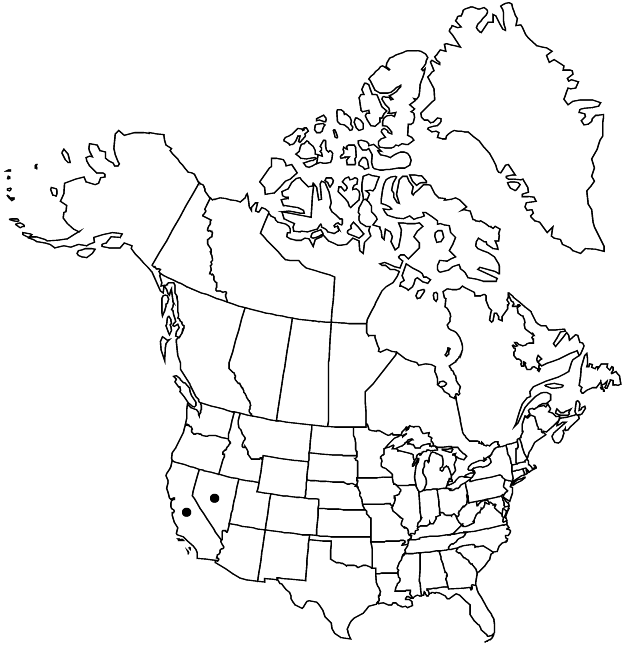Eriogonum kennedyi
Proc. Amer. Acad. Arts 12: 263. 1877.
Herbs, scapose, matted, 0.4–1.5 × 1–4 dm, glabrous or sparsely floccose to tomentose, grayish or reddish. Stems matted, occasionally with persistent leaf bases, up to 1/5 height of plant; caudex stems matted; aerial flowering stems scapelike,erect or nearly so, slender, solid, not fistulose, (0.5–)1.5–4.5(–5) dm, glabrous or sparsely floccose to tomentose. Leaves basal, fasciculate in terminal tufts, sometimes 1 per node and sheathing up stem 1–2 cm; petiole 0.05–1 cm, tomentose; blade oblanceolate, elliptic, or oblong, 0.2–1(–1.2) × 0.05–0.4 cm, grayish-, brownish-, white-, or reddish-white-tomentose, usually on both surfaces, margins plane or revolute. Inflorescences capitate, 0.4–1 cm; branches absent; bracts 4–7, scalelike, triangular, 0.5–2.5(–3) mm. Peduncles absent. Involucres 3–7 per cluster, turbinate to turbinate-campanulate, 1.5–4 × 1–3.5 mm, rigid, glabrous or tomentose; teeth 5, erect to spreading, 0.4–1.5 mm. Flowers 1.5–4 mm, glabrous; perianth white to pink or rose; tepals connate proximal 1/4, monomorphic, oblanceolate to elliptic or obovate to nearly oval; stamens exserted, 1.5–4 mm; filaments glabrous or sparsely pubescent proximally. Achenes light brown to brown, 1.8–4 mm, glabrous.
Distribution

Calif., Nev.
Discussion
Varieties 5 (5 in the flora).
The capitate inflorescence and basal leaves of Eriogonum kennedyi distinguish it from the closely related E. wrightii. At higher elevations in the Transverse Ranges of California, the distinction between E. kennedyi var. kennedyi and E. wrightii var. subscaposum is not always clear, especially near the summit of Mt. Pinos. At lower elevations in the San Bernardino Mountains, in more arid habitats, the distinction between E. kennedyi var. austromontanum and E. wrightii var. subscaposum also is blurred. For the most part this intergradation seems to be associated with a reduction in the length of the inflorescence in depauperate expressions of var. subscaposum and not a result of hybridization. The extreme reduction seen in E. wrightii var. olanchense exemplifies the general trend in the California expressions of that species toward depauperate forms. It is felt that E. kennedyi itself is an established segregate that owes its origin to E. wrightii. Members of the species are food plants for Bauer’s dotted-blue butterfly (Euphilotes baueri) and the Ord Mountain metalmark butterfly (Apodemia mormo dialeuca).
Selected References
None.
Lower Taxa
Key
| 1 | Leaf tomentum white; plants forming dense mats; desert ranges, ec California, wc Nevada | Eriogonum kennedyi var. purpusii |
| 1 | Leaf tomentum grayish or reddish- to brownish- white; plants usually forming loose, open mats; southern Sierra Nevada and Transverse Ranges of s California | > 2 |
| 2 | Leaf blades oblong, 0.3-0.5 × 0.1-0.4 cm | Eriogonum kennedyi var. pinicola |
| 2 | Leaf blades oblanceolate to elliptic, 0.2-1.2 × 0.05-0.2 cm | > 3 |
| 3 | Scapes 0.5-2(-3) cm | Eriogonum kennedyi var. alpigenum |
| 3 | Scapes 4-15 cm | > 4 |
| 4 | Leaf blades 0.2-0.4(-0.5) × 0.05-0.15(-0.2) cm; scapes glabrous; involucres 1.5-2.5 mm | Eriogonum kennedyi var. kennedyi |
| 4 | Leaf blades (0.4-)0.6-1(-1.2) × 0.1-0.2 mm; scapes sparsely tomentose to floccose; involucres 2.5-4 mm | Eriogonum kennedyi var. austromontanum |